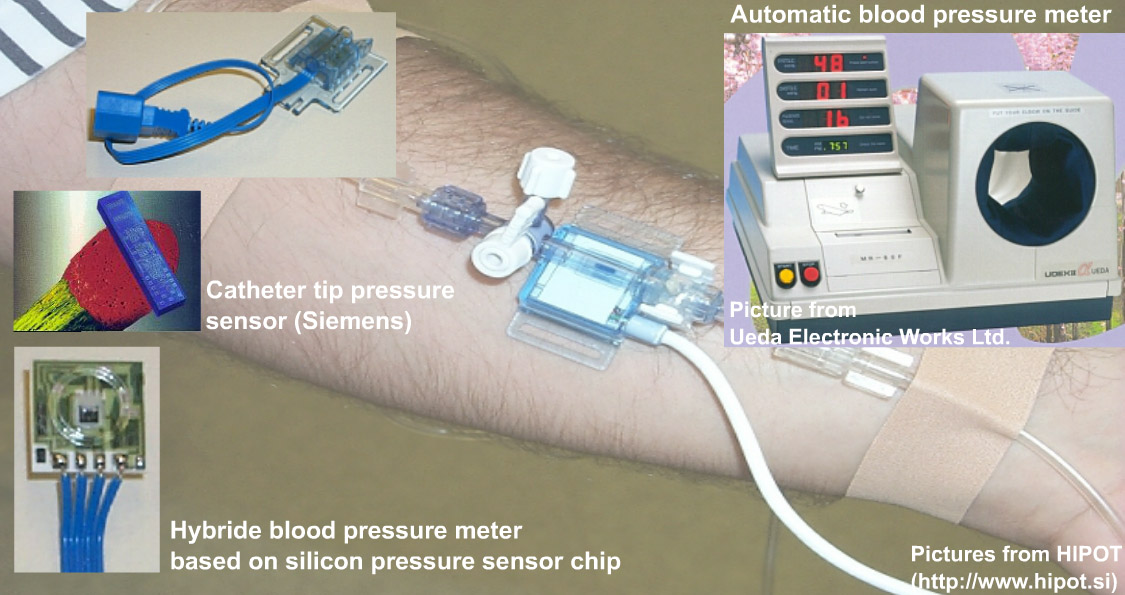
6 - Application of sensors
6.4 - Biomedical sensors
Blood pressure meter

Tonometer
An important application field of miniature silicon based mechanical sensors may be the intraocular pressure measurement. The internal pressure (p) in a sphere can simply calculated be by measuring the necessary force (F) that can flatten a certain area (A) of the sphere: p=F/A. The sensor consists of a silicon substrate containing four meander-shaped diffused resistor arrays, having a number of resistor elements with meander contacts at the resistor nodes. The sensor is covered by a Mylar (DuPont) foil, which is coated with a thin gold layer at the side that faces the sensor surface. The foil is separated from the sensor by polyimide spacer. When the applanation sensor is pressed against the eye globe, the Mylar foil with its gold film contacts a certain area as a function of the applied force; thus, shortcircuiting the meander resistor arrays within that area. Measuring the resulted resistance values that reflect the size and eccentricity of the flattened area, its diameter and distance from the nearest edge can be calculated. (A.P. Bergveld)


